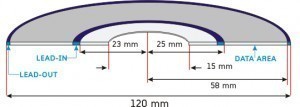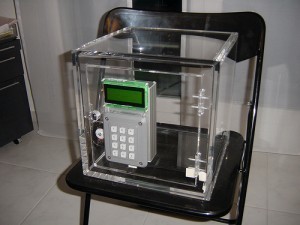Compact Disk Hole Diameter
Popularly known as the CD, the compact disk is made  up of a readable surface with closely spaced tracks. Available in optical disk form, it is commonly used to store different types of digital data. CDs for audio files were first released commercially in October 1982. Today, it remains one of the highly reliable standard storage medium for audio. The CD has many different interesting aspects including the diameter of the compact disk hole.
up of a readable surface with closely spaced tracks. Available in optical disk form, it is commonly used to store different types of digital data. CDs for audio files were first released commercially in October 1982. Today, it remains one of the highly reliable standard storage medium for audio. The CD has many different interesting aspects including the diameter of the compact disk hole.
The Diameter of the Compact Disk Hole
The standard diameter of the center spindle hole of the compact disk is 15 millimeters. Meanwhile, the measurement of the outer radius program area is 58 millimeters, the inner radius program area 25 millimeters and the standard disk thickness is 1.2 millimeters. Furthermore, the diameter of a standard CD is set at 120 millimeters. A single CD can actually store up to 700MB or play up to 80 minutes of audio files. It makes use of a semiconductor laser with a 780nm wavelength.
Additional Facts and Other Important Details
The CD is considered the spin-off of a precedent technology called the Laserdisc. In September 1976, Sony became the very first company to demonstrate the optical digital audio disk to the public. This particular disk featured a cross-interleaved error correction code, a 16-bit linear resolution and a 150-minute playing time. On March 8, 1979, Philips followed by holding a press conference entitled ‘Philips Introduce Compact Disc,’ where it demonstrated to the public an optical digital audio disk prototype.
The technical specifications of Sony’s audio disk were revealed at the 62nd Audio Engineering Society Convention, which was held in Brussels, Belgium, from March 13 to 16, 1979. In that very same year, Philips and Sony made a joint task force comprised of skilled engineers to create a new digital audio disk. Japanese electrical engineer Toshitada Doi and Dutch inventor Kees Schouhamer Immink were two of the most notable members of that group. They eventually came up with the Compact Disc standard after one year of discussion and experimentation.
In 1981, the initial test compact disk was pressed at the Polydor Pressing Operations plant in Hannover, Germany. The CD contained a recording of “Eine Alpensinfonie,” which was conducted by Herbert von Karajan and played by the Berlin Philharmonic.
The compact disk has two major sizes. The most commonly used size has a diameter measuring 120 millimeters, which has a 74- to 80-minute capacity to play audio files. This size was also adopted for later formats like the Blu-ray Disc, the HD-DVD and Super Audio CD. The second size has a diameter of 80 millimeters, which can actually play audio files of up to 24 minutes.





